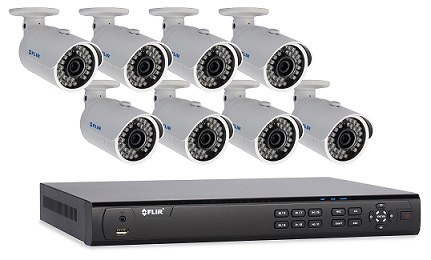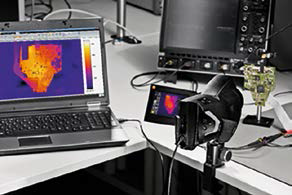For some years the installations of Closed TV circuit They are growing at a very fast pace as is technology that is continually changing and developing.
At present we have several technologies both in cameras and in the video recorder where the images will be stored.
Analog CCTV vs Digital CCTV
These technologies could be divided into Analog, HD and IP, the latter being the highest quality without a doubt.
The standard analog systems are obsolete since the resolution of the camera is very low, the maximum resolution that it can offer us is 4CIF (704×480) or D1 (720×480). In addition, since it is an obsolete technology, nothing is being developed on it and it is becoming increasingly difficult to buy systems of this technology. On the other hand, analog video recorders do not have all the functions that any of the other technologies that are in continuous development can offer us.
CCTV HD protocols
High definition or HD systems are divided into three types of communication protocols, AHD, HD-TVI and HD-CVI. The most standard of all of them is HD-TVI and most manufacturers work with this protocol that little by little is winning the battle against other protocols. HD cameras offer us a minimum resolution of 720p (1280×720). That would be the minimum resolution that an HD camera offers us, being able to reach a maximum resolution that is currently 8 Megapixel.
HD technology has entered the market quickly since it uses the same wiring as an analog camera but multiplies the resolution of the recorded image by more than 4 times. By being able to use the same wiring, the installation cost is minimal since we do not have to install new wiring if we already had an analog video system.
Price differences between an Analog CCTV and a Digital one
The price difference between a standard analog camera with respect to HD is not remarkable. In addition, HD video recorders usually allow the management of HD cameras and analog cameras, so the investment to be made can be gradual according to our needs.
Now a new way of feeding the HD technology is appearing called POC (Power Over Coaxial) which allows us to feed and transmit the data from the camera through a single coaxial. This is due to competition against IP technology which also allows the camera to be transmitted and powered via a single POE (Power Over Ethernet) cable.
CCTV via IP
IP technology is the one that offers us the most versatility in terms of installation, since it can be much more distributed through data switches. When carrying out the installation with switches, a possible expansion of the system will be much less expensive since we will not have to go to the video recorder to install the camera. If we have long distances or the wiring goes with high voltage lines, it can be done with fiber optics that is immune to the interference that these special conditions can cause us.
After this brief introduction to the different Closed Circuit Television systems, we will talk about “megapixel fashion”.
With these previously mentioned advances both in resolution and in camera functions, a war has started between installation companies and customers, who are only emphasizing the video resolution that the camera generates for us without taking into account aspects as significant as real or digital WDR, compression of the video system, images per second that the camera is capable of managing, type of camera sensor and many more.
In addition to all these characteristics, we must also stop to think about the resolution that we need in the room to be viewed. Managing a camera that generates a 2 Megapixel image is not the same as managing a 4 Megapixel image, for example. With this, what we want to make you understand is that to record an entrance to a home, having a 2 Megapixel resolution should be enough. Why am I going to put 4 Megapixel? Being that we are going to make the video recorder work more to its limit and occupying much more hard disk. Am I going to be able to record those 4 Megapixels (not necessary) at acceptable images per second?
Not everything is megapixels in a digital CCTV
The conclusion is that each camera is for a type of scenario and requirements that the client must tell us because not everything is Megapixel, every installation must have a design so as not to encounter surprises.






